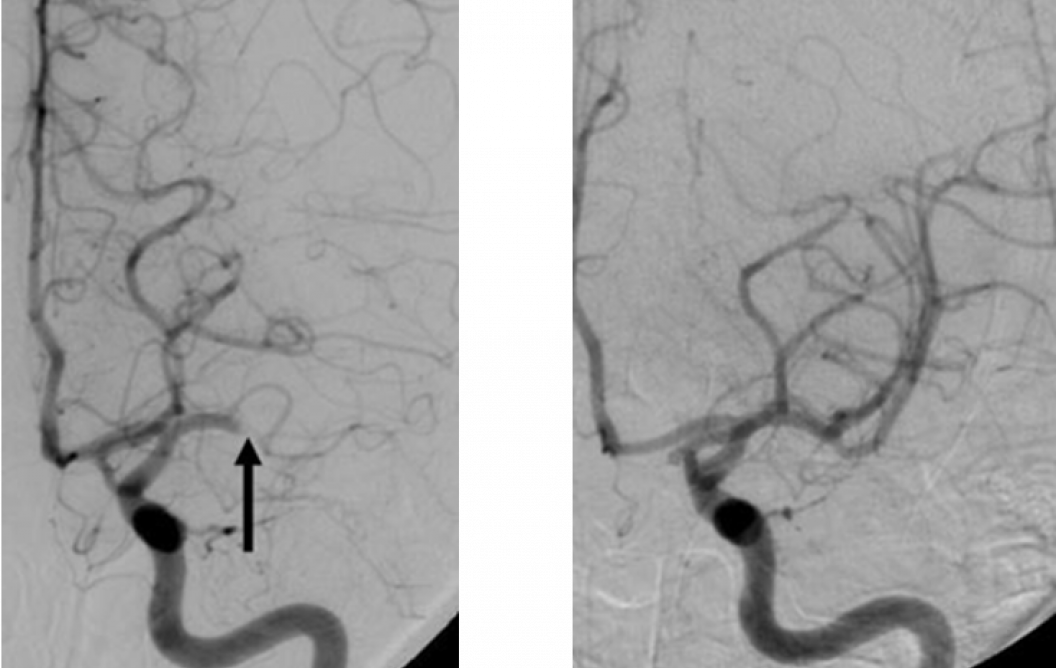More patients with an ischemic stroke are eligible for treatment
Research in 18 Dutch hospitals, coordinated from Maastricht UMC+ and funded by the Dutch Heart Foundation (Hartstichting) and the Dutch Brain Foundation (Hersenstichting), shows that mechanically removing a clot after a stroke is useful for many more patients than previously thought, even up to 24 hours after the onset of symptoms. Thanks to this study (MR CLEAN-LATE), more patients are now eligible for this treatment. The research article was published on March 30 in the internationally renowned medical-scientific journal The Lancet.
Bij een herseninfarct of beroerte ontstaat schade doordat er in een gedeelte van de hersenen geen bloedvoorziening meer is. Vaak is de oorzaak een bloedstolsel dat het bloedvat afsluit. Hoe langer de afsluiting bestaat, des te groter de hersenschade zal zijn. Het is dus altijd van belang zo snel als mogelijk te handelen vanaf de eerste klachten. Met de MR CLEAN studie toonde de onderzoeksgroep al in 2015 aan dat het stolsel uit het bloedvat kan worden verwijderd middels een katheter die via de lies wordt opgevoerd tot vlak bij het stolsel in de hersenen (endovasculaire behandeling) en dat dit veilig en effectief was tot zes uur na ontstaan van de klachten.
MR CLEAN-LATE study
The effectiveness of endovascular treatment decreases as more time elapses between the onset of symptoms and the start of treatment. Previous research showed that the treatment was more effective in patients with "collaterals" (blood vessels that supply the affected area with some blood through detours) than in patients with poorer or no collateral filling. The aim of the MR CLEAN-LATE study was therefore to investigate whether endovascular treatment of stroke would still be effective and safe in the "late time window" (defined as 6 to 24 hours after the onset of symptoms or the last symptom-free moment) for patients selected based on the presence of collateral filling on the CT scan.
Positive results
The MR CLEAN-LATE study showed that patients with a stroke who presented themselves in the late time window and were selected based on the presence of collaterals on CT had a favorable effect from endovascular treatment. The positive result mainly translates into better functioning and better quality of life. Patients in the treatment group had significantly fewer limitations after three months than the group that was not treated. The lead researchers, neurologist Prof. Dr. Robert van Oostenbrugge and interventional radiologist Prof. Dr. Wim van Zwam, note that this research makes more patients eligible for stroke treatment, thereby achieving an improvement in quality of life for a significant group of people who have suffered a stroke.

Images of blood vessels in the brain: clot at arrow (left) and clot removed with catheter treatment (right)
This news article was previously published by Maastricht UMC+. The research article was published on March 30th in The Lancet.
The research was made possible in part by funding from the Dutch Heart Foundation and the Dutch Brain Foundation. The participating hospitals in the Netherlands are: Albert Schweitzer Hospital in Dordrecht, Amphia Hospital in Breda, Amsterdam UMC, Catharina Hospital in Eindhoven, Elisabeth-TweeSteden Hospital in Tilburg, Erasmus MC, Haaglanden Medical Center in The Hague, Haga Hospital in The Hague, Isala in Zwolle, Leiden UMC, Maastricht UMC+, Medisch Spectrum Twente, Noordwest Hospital Group in Alkmaar, Rijnstate Hospital in Arnhem, St. Antonius Hospital in Nieuwegein, University Medical Center Groningen, UMC Utrecht, and Radboud UMC. They are part of the national CONTRAST consortium, which aims to develop new and better treatments for stroke and brain hemorrhage.
